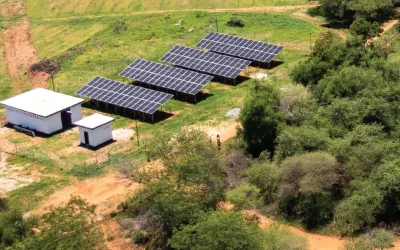ZETDC seeks tariff review to facilitate new projects
ZIMBABWE Electricity Transmission and Distribution Company (ZETDC) has sought a US2 cents/kWh tariff review for 2023 as it seeks to channel revenue generated towards a number of projects geared at increasing energy capacity in line with increasing power demand.
An application has since been lodged with the energy regulator, Zimbabwe Energy Regulation Authority (ZERA).
According to ZETDC, once granted the upward review, the expected impact of the tariff review on the economy range from improved power supply and reliability, increased economic productivity, increased capacity utilisation and attraction of investment into the energy sector through Independent Power Producers (IPPs).
Added to that, the power utility envisages improved security of electricity infrastructure and attainment of National Development Strategy 1.
There have been calls for Zesa to have cost-reflective power tariffs to sustain imports and ensure a consistent supply of electricity.
Speaking at the second edition of the Zimbabwe Economic Development Conference (Zedcon) in Victoria Falls, Energy and Power Development permanent secretary Dr Gloria Magombo said since the energy sector is capital intensive, the country requires US$8 billion to US$12 billion in infrastructure development to support the economic growth.
“Infrastructure is a long-term investment and as such we need long-term financing,” she said.
In a notice, ZETDC said the reasons for the upward adjustment range from enabling the utility to raise the revenue required for service provision in 2023, to cover costs for purchase of electricity, operations and maintenance, regulatory costs, research and development costs and general admin to take into consideration adjustment for under-recovery in the previous year.
It added that the review will enable it to support economic growth in the Mining, Agriculture, Industrial and Tourism sectors.
“The magnitude of the tariff adjustment being applied for in the interim is an increase of USc2/kWh on the existing tariff.”
On projects to be funded, ZETDC said they include rehabilitation and maintenance of the transmission and distribution network, servicing of the loan for Hwange 7 and 8 units, repowering of Hwange Unit 1-6 and procurement of operational vehicles.
Procurement of critical spares, tools and equipment and Kariba Unit 4 runner replacement is also under the radar.
Outlining internal measures undertaken to improve efficiency, revenue collection and system losses, ZETDC said it is completing the prepaid metering programme, installation of smart meters and migration of medium and large power users to prepayment and completion of statistical metering to enable load balancing, network reinforcement and rehabilitation.
It seeks to wrap up the construction of transmission lines and substations for the purpose of evacuating power (600 MW) from Hwange unit 7 and 8 projects.
Power generation continues to improve resulting in significantly fewer hours of load shedding with Hwange Power Station having increased generation capacity.
According to daily electricity generation figures from the Zimbabwe Power Company’s X handle (formerly Twitter), on Friday last week, 1567 MW was generated with Hwange producing 895 MW, Kariba 652 MW and 20 MW from IPPs. The country continues to pursue options that will result in increased power generation as it seeks to be energy self-sufficient an also export to the region.
Load shedding increased recently when power generation plunged to about 600MW from all power plants including Hwange Power Station, Kariba South Hydro Station and small thermal power stations.
Zimbabwe, like other regional countries, had been contending with serious power outages but investments in increased power generation, especially at Hwange Power Station where an additional 600MW have been added, have largely changed the situation.
The country invested US$1,4 billion in the expansion of Hwange Power Station, where Units 7 and 8 were constructed.
Hwange’s Unit 7 was successfully synchronised with the national grid in March, a development that improved electricity availability.-chronicle








